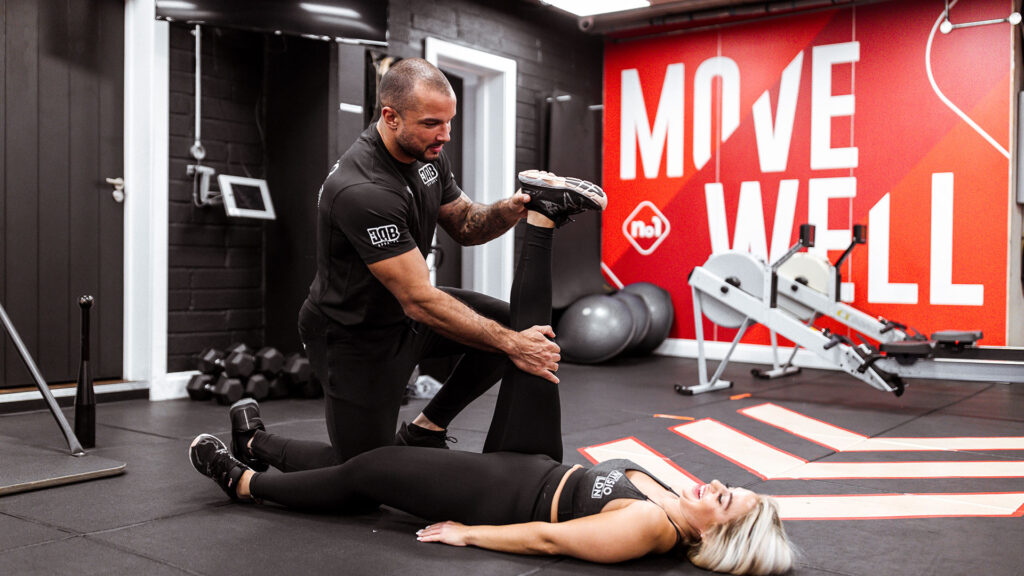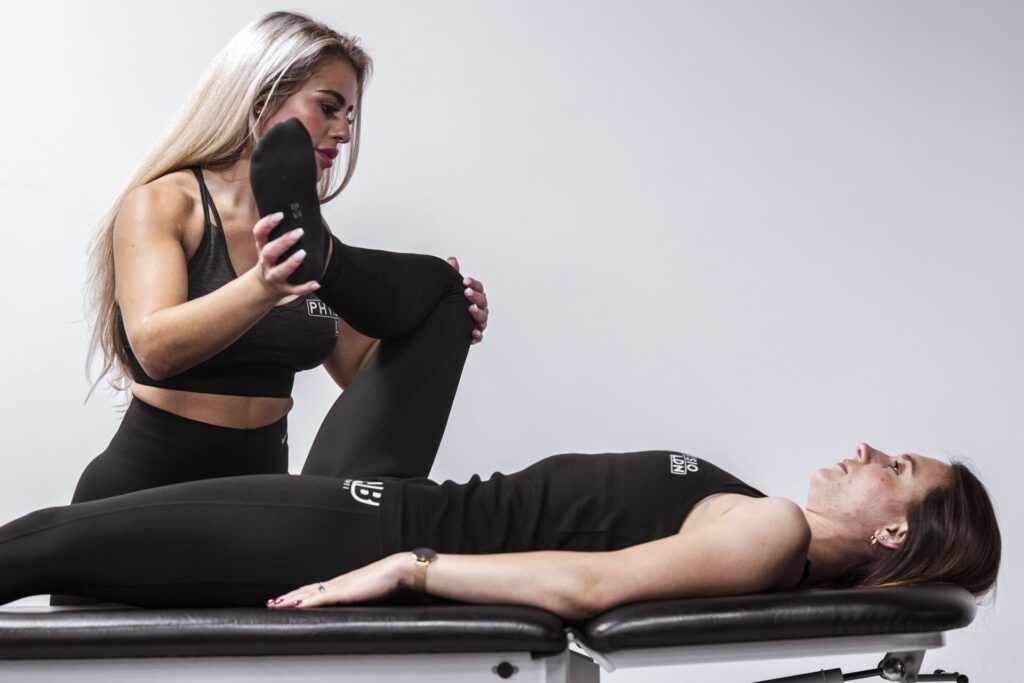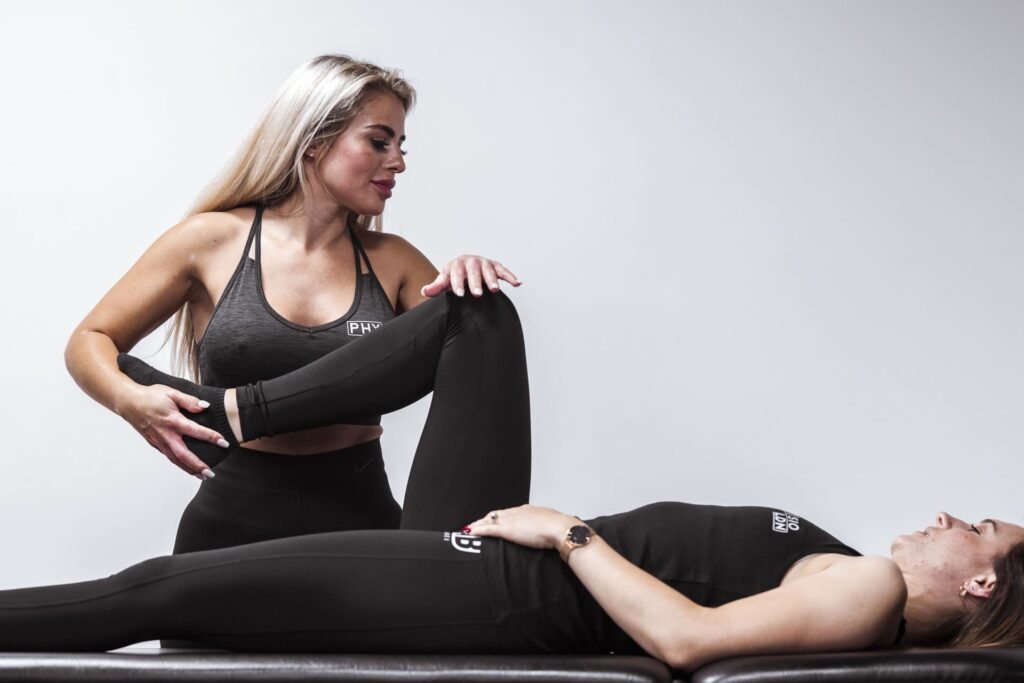Table of Contents
Main Takeaways
- Exercise is a proven non-drug therapy to relieve knee pain and improve function.
- Strengthening quadriceps, hamstrings, and calves enhances stability and reduces strain.
- Avoid high-impact moves like deep squats, running on hard surfaces, and jumping.
- Combining exercises with braces or hydrotherapy maximizes results.
- Seek physiotherapy if pain persists, worsens, or limits mobility.
Knee pain is a common complaint that affects people of all ages, often limiting mobility and impacting quality of life. Whether caused by injury, arthritis, or overuse, managing knee pain effectively is essential to maintain an active lifestyle. Among various treatment options, exercise stands out as a powerful, non-drug therapy that can reduce pain, improve function, and enhance overall knee health.If you’re comparing local care options, evidence-based knee pain treatment in London can help you recover while staying active.
Recent research highlights the effectiveness of targeted knee exercises combined with other therapies such as knee braces and hydrotherapy. A comprehensive meta-analysis of 139 studies involving nearly 10,000 patients found that these non-drug treatments significantly alleviate knee osteoarthritis symptoms, improving mobility and reducing discomfort (PLOS One, 2025).
This article explores the best exercises for knee pain relief, exercises to avoid, and guidance on when to seek professional help. It aims to provide a thorough, expert-backed resource for anyone looking to manage knee pain safely and effectively.
Top Exercises for Knee Pain Relief
Exercise is a cornerstone of knee pain management, especially for conditions like osteoarthritis. Engaging in the right types of exercise can strengthen the muscles around the knee, improve joint stability, and reduce pain. According to a 2024 meta-analysis involving nearly 12,500 participants, exercise improved pain scores by 8.7 to 13.1 points and physical function by 9.7 to 12.5 points on a 100-point scale, while also enhancing quality of life.

Here are some of the most effective exercises recommended for knee pain relief:
- Quadriceps Strengthening: Straight leg raises and wall sits target the quadriceps muscles, which support the knee joint. Strengthening these muscles reduces strain on the knee and helps stabilize the joint.
- Hamstring Curls: These exercises strengthen the muscles at the back of the thigh, balancing the forces around the knee and improving joint function.
- Calf Raises: Strengthening the calf muscles supports the lower leg and improves overall leg stability.
- Step-Ups: Controlled step-up and step-down movements enhance knee control and mimic everyday activities, promoting functional strength.
- Low-Impact Aerobic Exercises: Activities such as swimming or cycling provide cardiovascular benefits without excessive knee joint stress.
In addition to exercise, knee braces have been shown to be highly effective in managing knee osteoarthritis. Dr. Jones, an expert in musculoskeletal health, explains that knee braces can redistribute the load away from the affected compartments of the knee, providing significant pain relief and improving mobility.
Moreover, incorporating flexibility and stretching exercises into your routine can further enhance knee health. Gentle stretches for the quadriceps, hamstrings, and calves can improve the range of motion and alleviate stiffness, which is often a significant contributor to knee discomfort. Yoga and Pilates are excellent options for promoting flexibility while also focusing on core strength and balance, which are crucial for maintaining proper alignment and reducing the risk of injury.
It’s also important to note that consistency is key when it comes to managing knee pain through exercise. Establishing a regular routine, ideally under the guidance of a professional knee pain physical therapist, can help you track your progress and make necessary adjustments to your regimen. Additionally, staying mindful of your body’s signals is essential; if certain movements exacerbate your pain, it’s vital to modify or avoid them to prevent further injury and ensure a sustainable approach to knee health.
Exercises to Avoid
While exercise is beneficial, certain movements can exacerbate knee pain or cause further damage, especially if done incorrectly or without proper guidance. It is crucial to avoid high-impact or excessive twisting activities that place undue stress on the knee joint.
Common exercises to avoid or modify include:
- Deep Squats and Lunges: These can put excessive pressure on the knee cartilage and worsen pain, particularly in individuals with osteoarthritis.
- Running on Hard Surfaces: High-impact running can aggravate knee pain and lead to inflammation.
- Jumping and Plyometric Exercises: These activities involve sudden, forceful impacts that may strain the knee ligaments and cartilage.
- Twisting Movements: Sports or exercises involving rapid pivoting or twisting can increase the risk of knee injury.
Instead, focus on controlled, low-impact exercises that promote strength and flexibility without overloading the joint. Consulting a physiotherapist can help tailor a safe exercise program that avoids harmful movements and addresses individual needs.
In addition to avoiding certain exercises, it is essential to pay attention to your body’s signals. If you experience pain during a workout, it is crucial to stop and reassess your technique or the appropriateness of the activity. Modifications, such as using resistance bands or performing exercises in a seated position, can help alleviate stress on the knees while still allowing for effective strength training. Furthermore, incorporating gentle stretching routines can enhance flexibility and improve overall joint function, which is vital for maintaining mobility and reducing the risk of injury.
Moreover, consider integrating activities such as swimming or cycling into your routine. These low-impact exercises provide an excellent cardiovascular workout without the harsh impact on your knees. Swimming, in particular, allows for a full range of motion while supporting the body in water, making it an ideal choice for those looking to maintain fitness levels without aggravating knee issues. By prioritizing low-impact alternatives and listening to your body, you can create a sustainable exercise regimen that promotes long-term joint health.
When to Seek Professional Help
While many people can manage mild to moderate knee pain with home exercises and lifestyle adjustments, there are times when professional assessment and treatment are necessary. Persistent pain, swelling, instability, or reduced range of motion warrant a consultation with a healthcare provider.

Professional physiotherapy offers a comprehensive approach to knee pain management. Clinics like One Body LDN in London provide expert assessments and personalised treatment plans combining manual therapy, exercise rehabilitation, and pain management techniques. Their physiotherapists receive over five times the required regulatory training, ensuring high-quality care tailored to each patient’s condition.If you’re local, being seen by specialist London knee pain physiotherapists ensures your plan is evidence-based and paced to your goals.
Moreover, recent studies emphasize the importance of combining exercise with other non-drug therapies such as hydrotherapy and knee braces for optimal outcomes in knee osteoarthritis. If knee pain limits daily activities or worsens despite conservative measures, seeking professional help can prevent further deterioration and improve long-term function.
In cases of acute injury, sudden swelling, or inability to bear weight, immediate medical evaluation is crucial to rule out fractures, ligament tears, or other serious conditions. Recognizing the signs of a serious knee injury can be challenging, but symptoms such as a popping sound at the moment of injury, severe pain that does not improve with rest, or visible deformity should never be ignored. These indicators often suggest that the knee has sustained significant damage, necessitating prompt intervention to facilitate recovery and restore function.
Additionally, the psychological impact of chronic knee pain is often overlooked. Many individuals experience anxiety or depression as a result of their limitations, which can further exacerbate their physical condition. Engaging with a multidisciplinary team that includes not only physiotherapists but also psychologists or counselors can be beneficial. This holistic approach addresses both the physical and emotional aspects of knee pain, helping patients regain their confidence and improve their overall quality of life. For detail information see the blog chronic knee pain: causes, relief & mental health tips.
FAQ
What are the best exercises to relieve knee pain?
Strengthening exercises targeting the quadriceps, hamstrings, and calves, combined with low-impact aerobic activities like swimming and cycling, are highly effective for knee pain relief. These exercises improve muscle support around the knee, reduce joint stress, and enhance mobility. Additionally, exercises such as leg raises, wall sits, and step-ups can further enhance stability and strength. Incorporating flexibility exercises, like gentle stretching and yoga, can also help maintain a healthy range of motion in the knee joint, which is crucial for overall joint health.

Can exercise worsen knee osteoarthritis?
Exercise, when done correctly, generally benefits knee osteoarthritis by strengthening muscles and improving joint function. However, high-impact or excessive twisting movements can worsen symptoms. It is important to follow a tailored exercise plan designed by a healthcare professional. Furthermore, incorporating rest days and listening to your body can prevent overexertion. Engaging in activities such as tai chi can also provide a gentle way to improve balance and coordination, which may help reduce the risk of falls and further injury.
How effective are knee braces for managing knee pain?
Knee braces are very effective, especially for individuals with arthritis in specific knee compartments. They work by redistributing the load to less affected areas of the knee, reducing pain and improving mobility. In addition to providing support, some braces also offer compression, which can help reduce swelling and inflammation. It’s important to consult with a healthcare provider to determine the most suitable type of brace, as there are various designs tailored for different conditions and levels of activity.
When should I see a physiotherapist for knee pain?
If knee pain persists for more than a few weeks, worsens, or limits your daily activities, it is advisable to seek professional assessment. Physiotherapists can provide personalised treatment plans that include hands-on therapy and exercise rehabilitation to address the root cause of pain. They may also incorporate modalities such as ultrasound therapy or electrical stimulation to promote healing. Early intervention can significantly enhance recovery outcomes and prevent further complications, making it essential to act promptly if you notice persistent discomfort.
Is hydrotherapy beneficial for knee pain?
Yes, hydrotherapy is one of the most effective non-drug therapies for knee osteoarthritis alongside exercise and knee braces. The buoyancy of water reduces joint load, allowing gentle movement and strengthening without pain. Moreover, the warm water can help relax muscles and improve circulation, further aiding in the healing process. Many facilities offer structured hydrotherapy programs that include guided exercises, making it an excellent option for those who may struggle with traditional exercise methods due to pain or mobility issues.
Can I use private health insurance for physiotherapy in London?
Many London physiotherapy clinics, including One Body LDN, accept all major private health insurance providers. This allows patients to access expert care, including exercise therapy and manual treatments, often at no direct cost to the patient. Additionally, some insurance plans may cover alternative therapies such as acupuncture or massage therapy, which can complement physiotherapy treatments. It’s advisable to check with your insurance provider to understand the specifics of your coverage and any necessary referrals that may be required for treatment.
Start Your Journey to Knee Pain Relief with One Body LDN
If you’re struggling with knee pain and looking for expert care that goes beyond temporary fixes, One Body LDN is your destination for lasting relief. Voted as the best London physio clinic, our award-winning team specializes in musculoskeletal physiotherapy, sports injuries, and post-operative care. We’re committed to diagnosing the root cause of your pain and crafting a personalized rehab plan that targets your specific needs. With a team that includes former athletes, ex-Team GB members, and NHS specialists, we ensure you receive top-tier treatment. Don’t let knee pain hold you back any longer. Book your free initial assessment at our clinic today and take the first step towards a pain-free life.


